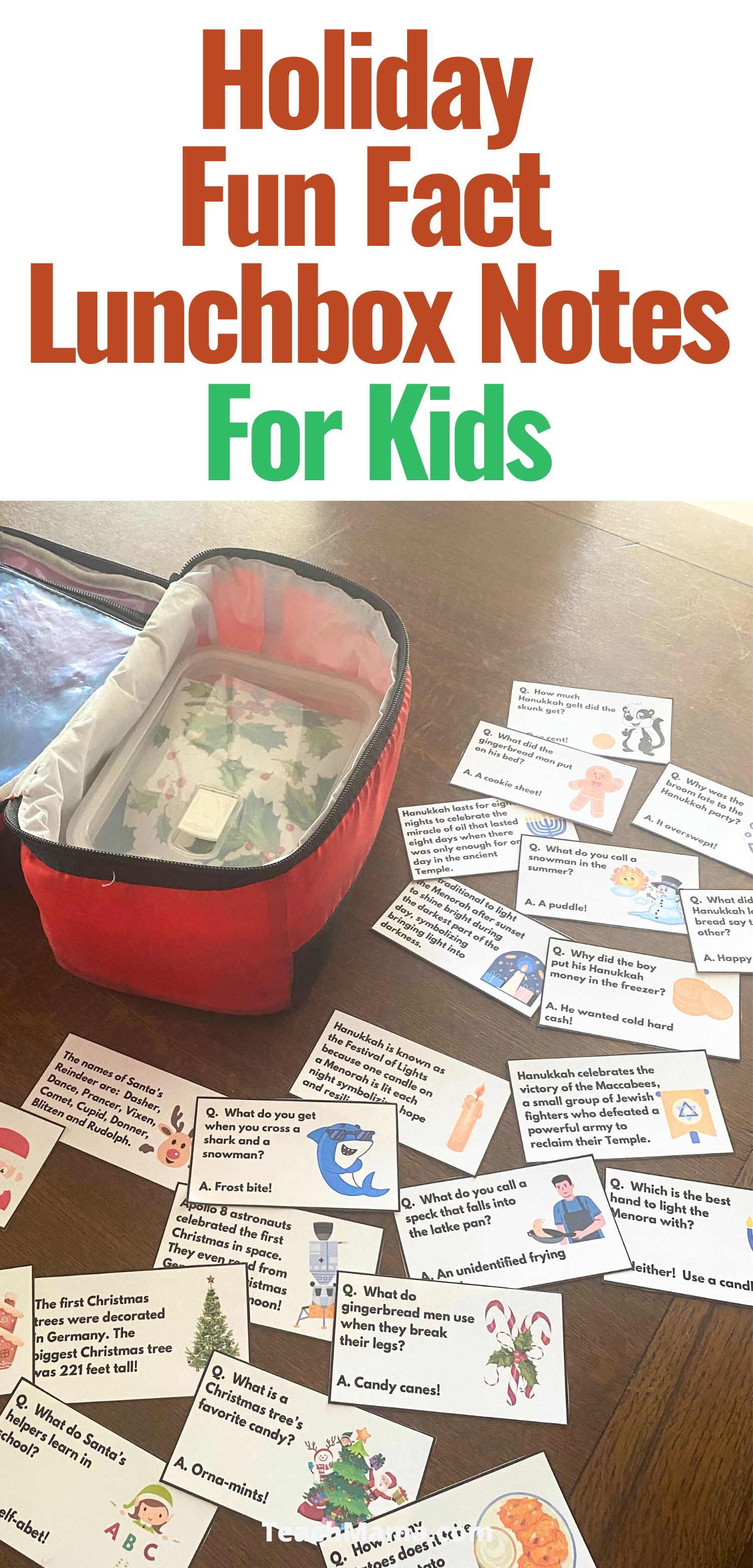Make lunchtime a joyful journey this December with Holiday Fun Fact Lunchbox Notes! Each lunchbox note highlights a unique holiday tradition from different cultures, bringing a daily dose of holiday fun to your kiddo’s lunch time.

Holiday Fun-Fact Lunchbox Notes for Kids
These printable lunchbox notes are a simple yet delightful way to share intriguing Christmas facts from around the globe. Every day, kids can uncover fun traditions from countries like Mexico, China, and Australia, fostering a sense of curiosity and wonder. They’ll be thrilled to learn about festive foods, customs, and celebrations from places they may only dream of visiting!
What’s Inside the Lunchbox Notes Printables?
Our Christmas Around the World Lunchbox Notes offer:
- Fascinating facts about holiday traditions across various cultures
- Quick snippets about how Christmas is celebrated worldwide, from festive foods to unique customs
- Fun tidbits designed to spark conversations and inspire new discoveries about global celebrations
How to Use the Lunchbox Notes
Just print, cut, and tuck these holiday notes into your child’s lunchbox for a delightful surprise. I like to use a bright white cardstock like this. These easy-to-read notes can also make perfect after-school treats alongside a cozy holiday snack!

Get Your Holiday Fun Fact Lunchbox Notes Printable!
Want to add some holiday cheer to your kiddo’s lunches? Throw your email into the box below, and these fun facts will arrive straight to your inbox like a bit of holiday magic!
Looking for more holiday learning ideas?
- New Year’s Family Interview
- More Holiday Fun Fact and Joke Lunchbox Notes (includes Hanukkah!)
- Printable Christmas Games for Kids
- Sweet Homemade Santa Cookie Tray
- Bake a Scripture Cake this Christmas!
- Christmas Eve Traditions to Start this Year
- Christmas Scavenger Hunt
PIN THIS FOR LATER


Fun idea! I can’t wait to your lunchbox note idea when my daughter is able to read.
thanks so much, Rebekah!! Thanks a ton for reading and happy, happy holidays!!
These lunch box notes are a great idea. I know my son will <3 them!! Thank you for sharing!!
If you’re serious about making money with your website, watch this free video about getting free instant targeted traffic to your site http://trafficbuddy.info
lol